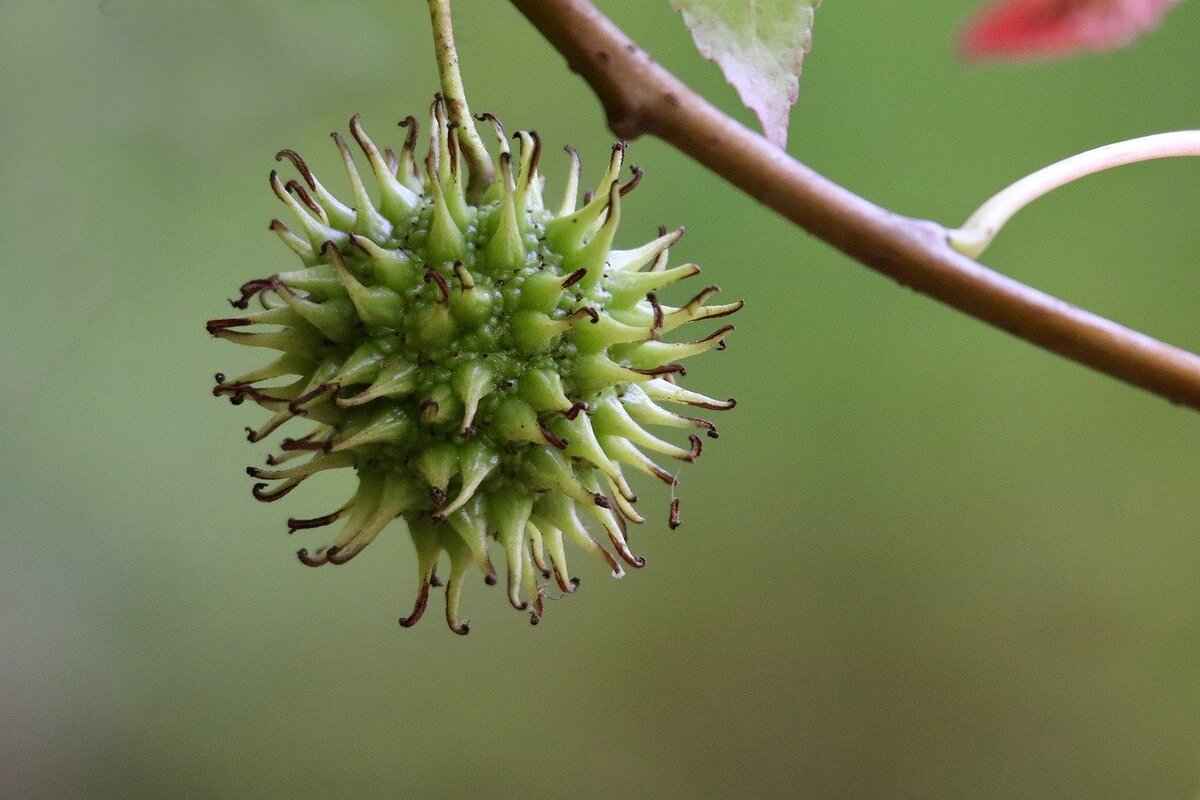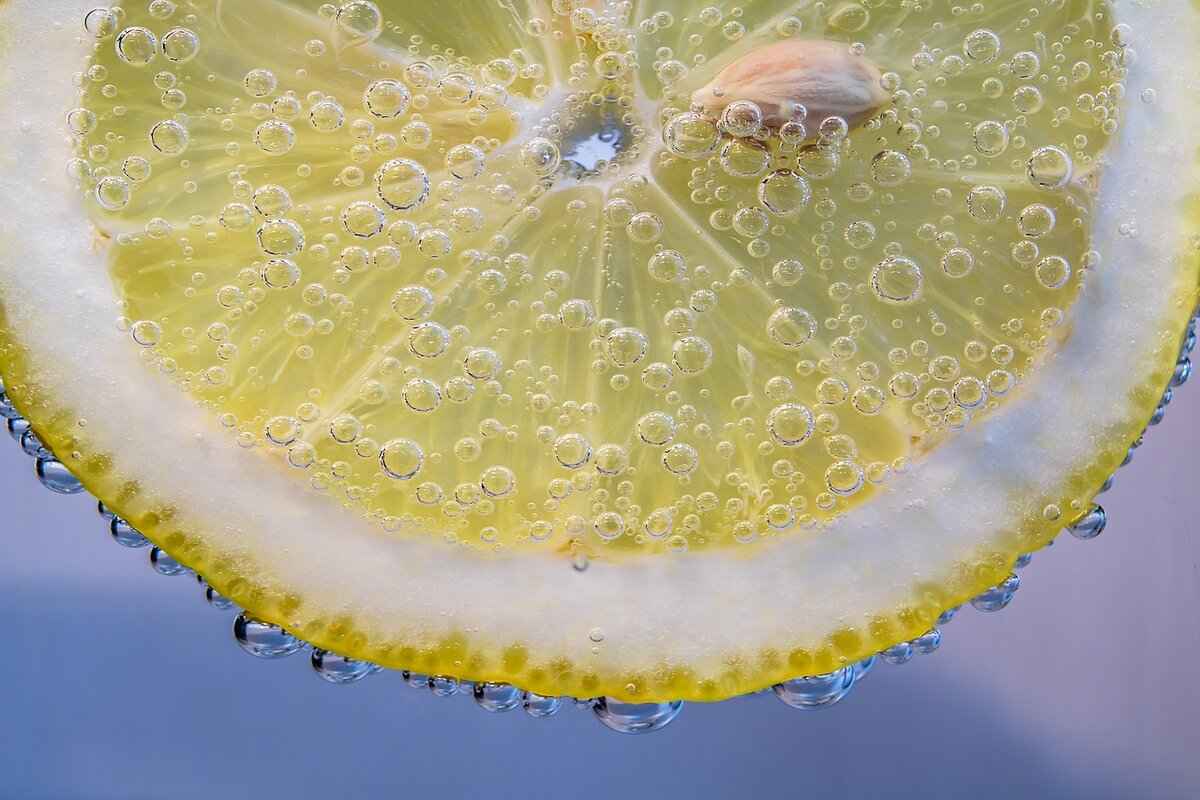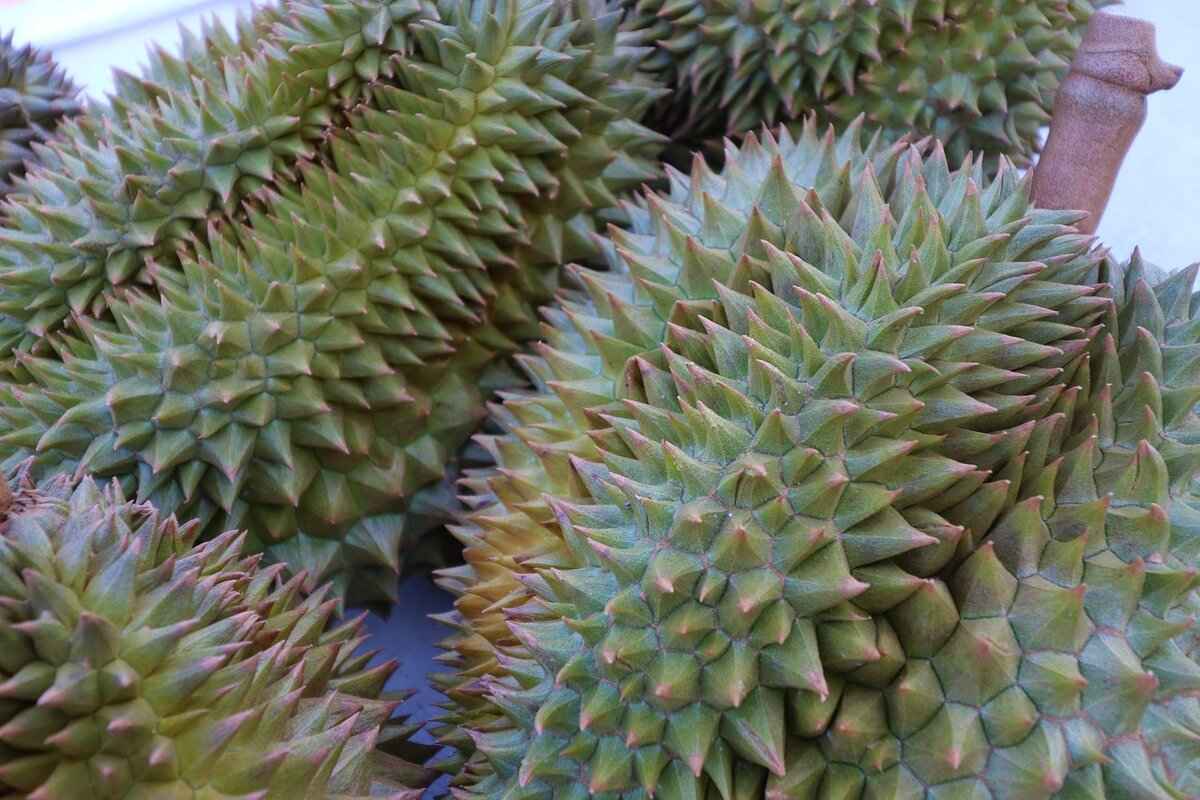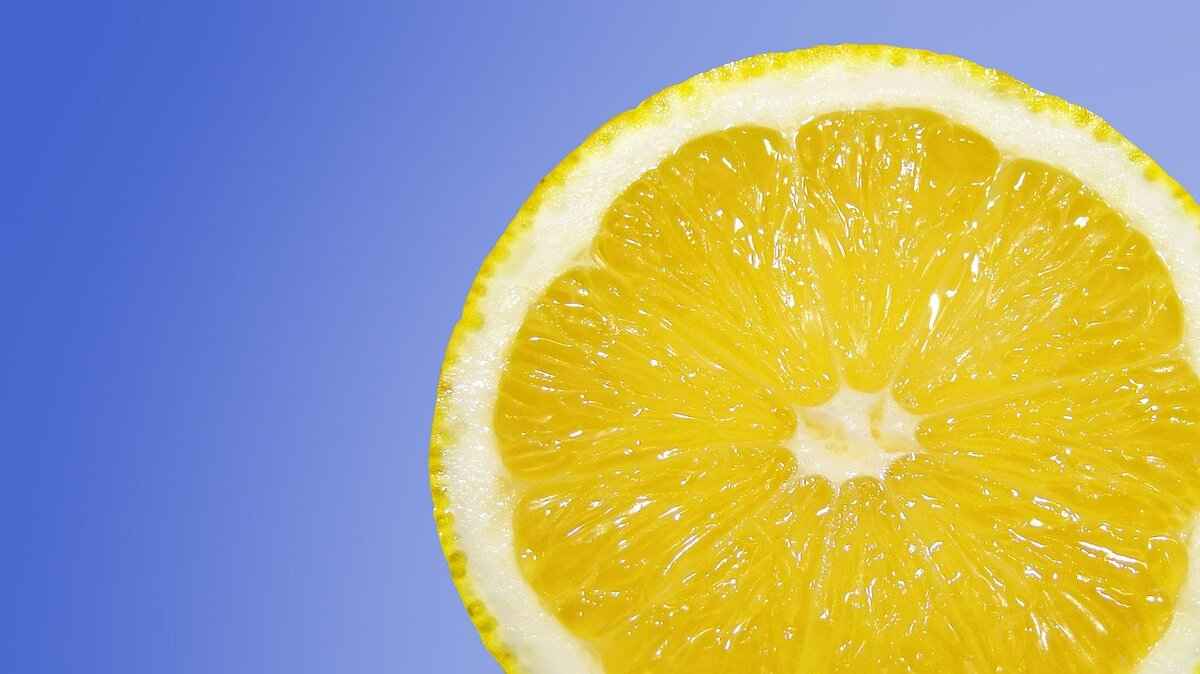Durian, often dubbed the “king of fruits,” is a fascinating tropical delicacy that evokes strong reactions from those who encounter it. Known for its formidable odor and unique flavor profile, durian stands out among fruits worldwide. This article delves into the distinctive characteristics of durian, its cultural significance, health benefits, and the controversies surrounding its infamous smell, providing a comprehensive overview for both enthusiasts and skeptics.
Durian is celebrated for its creamy texture and complex flavor, which can be described as a blend of sweet and savory notes. Unlike any other fruit, its custard-like flesh is encased in a spiky exterior, making it visually striking. The variety of durian also plays a crucial role in its uniqueness, with different types offering varying flavors and aromas. Some popular varieties include:
- Musang King – Known for its rich flavor and creamy texture.
- D24 – Renowned for its sweet taste and slight bitterness.
- Red Prawn – Offers a sweet, almost caramel-like flavor.
The infamous odor of durian is often described as a mix of rotten onions and turpentine, leading to a polarizing perception. The strong smell is primarily due to the presence of specific sulfur compounds, such as ethyl methyl sulfide and diethyl sulfide. These compounds are responsible for the fruit’s distinctive aroma and can elicit both attraction and repulsion.
The science behind durian’s aroma is complex. Research indicates that the fruit’s smell can trigger various emotional responses, often linked to personal experiences. This section breaks down how these sulfur compounds interact with our olfactory receptors, leading to the varied reactions people have towards durian.
Many enthusiasts argue that the smell of durian enhances its flavor. The relationship between aroma and taste is well-documented, with aroma playing a significant role in how we perceive flavor. This section explores how the unique aroma of durian can impact the overall tasting experience.
Interestingly, not all durians are created equal in terms of smell. Some varieties are known for their milder aroma, making them more appealing to those who are sensitive to strong smells. Exploring these varieties can provide a more palatable introduction to durian for newcomers.
The polarizing nature of durian has led to passionate opinions across cultures. In Southeast Asia, durian is revered and celebrated, often featured in festivals and culinary traditions. Conversely, in other parts of the world, it faces criticism and is even banned in certain public spaces due to its potent odor. This section discusses how cultural contexts shape public perception and acceptance of durian.
Beyond its controversial aroma, durian is packed with nutritional benefits. Rich in vitamins C and B, potassium, and dietary fiber, durian can contribute to overall health. This section highlights the numerous health advantages of incorporating durian into your diet, from boosting immunity to promoting digestive health.
Despite its benefits, durian may pose certain health risks. Individuals with specific allergies or dietary restrictions should approach durian with caution. This subsection outlines potential concerns, ensuring that readers are well-informed before indulging in this unique fruit.
For those willing to venture into the world of durian, practical tips for selecting, preparing, and enjoying this unique fruit are essential. Here are some expert recommendations:
Choosing the right durian can enhance your experience. Look for a fruit with a strong aroma and a slight give when pressed. Additionally, check for visible cracks in the shell, which can indicate ripeness.
Durian can be incorporated into various dishes, from desserts to savory meals. Some creative recipes include:
- Durian Ice Cream – A creamy treat that highlights the fruit’s unique flavor.
- Durian Pancakes – Fluffy pancakes infused with durian for a delightful breakfast.
- Durian Curry – A savory dish that combines the fruit with spices for a unique culinary experience.

What Makes Durian Unique?
Durian is often referred to as the king of fruits, a title that reflects both its regal stature in the fruit kingdom and the passionate opinions it evokes among those who encounter it. This tropical fruit, native to Southeast Asia, is renowned for its distinctive taste and creamy texture, setting it apart from other fruits around the globe. In this section, we explore the unique characteristics that make durian a culinary curiosity and a cultural icon.
One of the most notable features of durian is its size and shape. Typically large and spiky, it can weigh anywhere from 1 to 3 kilograms, making it quite a formidable fruit. The outer shell is covered in thorn-like spikes, which can deter even the most adventurous eaters. Inside, the flesh is soft, custard-like, and ranges in color from pale yellow to deep gold, depending on the variety.
- Flavor Profile: Durian’s flavor is often described as a complex mix of sweet and savory. Some enthusiasts compare it to a blend of almond, cheese, and garlic, creating a unique taste experience.
- Nutritional Value: Packed with vitamins, minerals, and healthy fats, durian is a nutrient-dense fruit. It contains vitamin C, potassium, and dietary fiber, making it a healthy addition to any diet.
- Cultural Significance: In many Southeast Asian countries, durian is celebrated in festivals and is considered a delicacy. Its status as a cultural symbol further enhances its allure.
The aroma of durian is perhaps its most infamous characteristic. Often described as pungent or even offensive, the smell can evoke strong reactions. While some people are drawn to its unique scent, others find it unbearable. This polarizing nature of durian is a significant part of its identity.
The smell is primarily attributed to a group of sulfur-containing compounds, including ethanethiol and disulfides. These compounds are responsible for the fruit’s distinctive odor, which is often likened to rotten onions or turpentine. However, for many enthusiasts, the aroma is a sign of ripeness and flavor, adding to the overall experience of enjoying durian.
Not all durians are created equal when it comes to smell and taste. There are numerous varieties, each with its own unique characteristics. Some of the most popular types include:
- Musang King: Known for its rich flavor and creamy texture, this variety is highly sought after and often commands high prices.
- D24: This type is known for its sweet and slightly bitter taste, making it a favorite among durian lovers.
- Red Prawn: With its sweet, custardy flesh and minimal odor, this variety is often recommended for first-time durian eaters.
Choosing the right variety can significantly impact the overall experience, especially for those who are sensitive to strong odors. Many enthusiasts suggest starting with varieties known for their milder scents.
In summary, durian is a multifaceted fruit that captivates and divides opinions. Its unique flavor, nutritional benefits, and cultural significance make it a fascinating subject of exploration. Whether you love it or hate it, there’s no denying that durian holds a special place in the hearts of many.
king of fruits
Durian, often dubbed the , is a tropical delicacy that evokes strong reactions from people worldwide. Its unique characteristics, cultural significance, and health benefits make it a fascinating subject for both enthusiasts and skeptics. This article aims to provide a comprehensive overview of durian, exploring its distinctive qualities, the controversies surrounding its odor, and practical tips for enjoying this extraordinary fruit.
Durian’s uniqueness lies in its distinctive taste and texture. Unlike any other fruit, it has a creamy, custard-like consistency that can be both delightful and off-putting. The flavor profile is complex, often described as a mix of sweet, savory, and even a hint of bitterness. This section delves into the factors that set durian apart from other fruits globally.
The infamous odor of durian is a topic of heated debate. The strong smell, often compared to rotten onions or turpentine, is primarily due to specific sulfur compounds. This section analyzes the compounds responsible for its smell and why it elicits such varied reactions from people.
The unique smell of durian is attributed to specific sulfur compounds such as ethanethiol and disulfides. These compounds interact with our olfactory receptors, leading to the polarizing perceptions of its aroma. Understanding the science behind these compounds helps explain why some people love durian while others find it unbearable.
Many claim that the smell of durian significantly influences its flavor profile. This section examines the relationship between aroma and taste, particularly in the context of durian. The olfactory experience can enhance or detract from the perceived flavor, making this connection crucial for understanding durian’s appeal.
Not all durians are created equal when it comes to smell. Certain varieties, such as Musang King, are known for their sweeter taste and milder aroma. Here, we explore different durian varieties and which ones might be more palatable for those sensitive to strong odors.
Beyond its controversial aroma, durian offers numerous health benefits. This section highlights the nutritional value and potential health advantages of incorporating durian into your diet.
Durian is packed with vitamins and minerals, including Vitamin C, potassium, and dietary fiber. Here, we provide a detailed overview of its nutritional content and how it contributes to overall health, such as boosting the immune system and aiding digestion.
Despite its benefits, durian may pose certain health risks. This subsection outlines potential concerns, such as allergies and dietary restrictions, to consider before indulging. For instance, durian is high in calories and may not be suitable for those on a strict diet.
For those willing to try durian, this section offers practical tips for selecting, preparing, and enjoying this unique fruit, along with delicious recipe ideas.
Choosing the right durian can enhance your experience. Look for a durian with a strong aroma and a slightly soft shell. This part provides expert advice on how to select a ripe and flavorful durian.
Durian can be incorporated into various dishes, from sweet desserts like durian ice cream to savory options such as durian curry. Here, we share creative recipes that highlight durian’s unique flavor, encouraging adventurous eaters to explore its culinary potential.
due to its distinctive taste and texture. This section delves into what sets durian apart from other fruits globally.
Durian, often dubbed the king of fruits, stands out in the world of produce due to its unique characteristics. With a spiky exterior and creamy, custard-like flesh, durian is a fruit that elicits strong reactions, both positive and negative. This article explores what makes durian so distinctive, its cultural significance, and its health benefits, while also addressing the controversies surrounding its potent smell.
Durian is unlike any other fruit in the world. Its distinctive taste is a blend of sweet and savory, often compared to a mix of almonds, cheese, and caramel. The texture is equally unique, being creamy and rich, which sets it apart from the typically crisp or juicy profiles of other fruits. This section delves into the aspects that make durian a culinary marvel:
- Flavor Complexity: The flavor of durian is incredibly complex, which can be an acquired taste for many.
- Texture: The creamy texture makes it a popular ingredient in desserts and savory dishes alike.
- Cultural Significance: In many Southeast Asian countries, durian is not just a fruit but a cultural icon, celebrated in festivals and culinary traditions.
The infamous odor of durian is a topic of debate and fascination. Many describe it as a mix of rotten onions and turpentine, which can be off-putting to newcomers. But what causes this strong smell?
- Sulfur Compounds: The unique smell of durian is attributed to specific sulfur compounds, which can elicit varied reactions from people.
- Perception of Smell: The perception of durian’s aroma can be influenced by cultural background and personal experiences.
Beyond its controversial aroma, durian is packed with health benefits. It is rich in vitamins and minerals, making it a nutritious addition to any diet. Here are some of the key health benefits:
- Rich Nutritional Profile: Durian is loaded with essential nutrients, including vitamin C, potassium, and dietary fiber.
- Antioxidant Properties: The antioxidants found in durian can help combat oxidative stress in the body.
- Energy Boost: The high carbohydrate content provides a quick energy source, making it popular among athletes.
For those willing to try durian, knowing how to select, prepare, and enjoy this unique fruit can enhance the experience:
- Selecting the Perfect Durian: Look for a durian with a strong aroma and a slightly soft exterior to ensure ripeness.
- Creative Recipes: Durian can be used in a variety of dishes, from durian ice cream to savory curries, showcasing its versatility.
In summary, durian is a fruit that is as divisive as it is beloved, with its unique taste, texture, and aroma making it a subject of fascination. Whether you are a long-time fan or a curious newcomer, exploring the world of durian can be an exciting culinary adventure.
Why Does Durian Smell So Strong?
When it comes to discussing durian, one cannot overlook its infamous odor. While some people are drawn to its unique scent, others find it utterly repulsive. This polarizing fruit has sparked debates and discussions across cultures, leading us to ask: What makes durian smell so strong?
The distinctive aroma of durian can be attributed to a combination of various compounds, primarily sulfur-containing compounds such as ethanethiol, dimethyl disulfide, and ethyl methyl sulfide. These compounds are responsible for the fruit’s pungent smell, often described as a mix of rotten onions, turpentine, and raw sewage.
- Ethyl 2-methylbutanoate: This compound gives durian its fruity aroma, balancing the stronger sulfur notes.
- Dimethyl sulfide: Often associated with a more unpleasant smell, it contributes to the overall pungency.
- Thiols: These sulfur compounds are largely responsible for the strong, lingering smell that can be off-putting to some.
The reaction to durian’s odor is largely subjective and can depend on various factors, including cultural background and personal experiences. In Southeast Asia, where durian is celebrated as the “king of fruits,” many people have grown up enjoying its unique flavor and aroma. In contrast, those who are unfamiliar with the fruit often find the smell overwhelming and unpleasant.
Interestingly, the relationship between aroma and taste is a crucial aspect of the durian experience. The strong smell can significantly influence how the fruit is perceived. Some enthusiasts argue that the aroma enhances the flavor, creating a complex taste profile that includes sweet, creamy, and savory notes. In contrast, those who dislike the smell may find it difficult to appreciate the fruit’s taste, leading to a negative eating experience.
Not all durians are created equal when it comes to smell. Some varieties are known for their milder aroma, making them more accessible to those who are sensitive to strong odors. For example, the Musang King durian is renowned for its rich flavor and relatively less pungent smell, making it a popular choice among newcomers.
Durian’s polarizing nature has led to passionate opinions worldwide. In many Asian cultures, it is revered for its health benefits and unique taste. However, in Western cultures, it is often met with skepticism and disdain. This cultural divide highlights the complexity of durian’s public perception and raises questions about how exposure and familiarity can shape our preferences.
In summary, the strong smell of durian stems from a mix of unique sulfur compounds and personal experiences. While some people embrace its odor and flavor, others remain repulsed by it. Understanding the science behind durian’s smell can help bridge the gap between enthusiasts and skeptics, allowing for a more nuanced appreciation of this controversial fruit.
Understanding Durian’s Chemical Composition
When it comes to the king of fruits, durian is both celebrated and reviled, primarily due to its powerful aroma. The unique smell of durian can be traced back to a variety of sulfur compounds that interact with our olfactory senses in fascinating ways. This article delves into the science behind these compounds and explores how they influence human perception.
Durian’s distinctive odor is largely attributed to a range of sulfur-containing compounds, including ethanethiol, disulfides, and thiazoles. These compounds are not only responsible for the fruit’s smell but also contribute to its complex flavor profile. Interestingly, the same compounds that create the infamous scent are also found in other foods, such as garlic and onions, but in different concentrations.
The perception of smell is subjective and can vary widely among individuals. Some people find the odor of durian irresistibly appealing, while others describe it as repulsive. This disparity can be attributed to genetic factors, cultural background, and personal experiences. Research has shown that certain sulfur compounds can trigger strong emotional responses, which may explain why durian evokes such polarized opinions.
For those who appreciate the scent of durian, the aroma is often linked to positive experiences and cultural significance. In many Southeast Asian countries, durian is celebrated and even referred to as the “fruit of the gods.” The smell can evoke feelings of nostalgia and comfort, making it a beloved delicacy for many.
Many enthusiasts argue that the aroma of durian enhances its flavor. The relationship between smell and taste is well-documented; our sense of smell plays a crucial role in how we perceive flavors. The unique combination of sulfur compounds in durian can create a rich and complex taste experience that complements its creamy texture.
Not all durians are created equal when it comes to odor. Some varieties, such as Musang King and D24, are known for their strong aroma, while others, like Red Prawn, may have a milder scent that is more tolerable for those sensitive to strong odors. Exploring different varieties can help individuals find a durian that suits their palate.
In many cultures, durian is more than just a fruit; it is a symbol of identity and heritage. Festivals celebrating durian are common in regions where it is grown, showcasing the fruit’s importance in local cuisine and traditions. This cultural significance often influences how people perceive its smell, as it is intertwined with memories and social experiences.
In summary, the unique smell of durian is a complex interplay of sulfur compounds that elicits varied reactions from people. Understanding the science behind these compounds and their effects on human perception can help demystify the fruit’s polarizing nature. Whether you love it or hate it, durian undoubtedly remains a fascinating subject of discussion in the world of fruits.

How Does the Smell Affect Taste?
When it comes to the durian, a fruit renowned for its distinctive aroma, many enthusiasts assert that the smell significantly influences its flavor profile. This intriguing relationship between aroma and taste is not merely anecdotal; it has been the subject of scientific inquiry and culinary exploration.
The human sense of smell plays a crucial role in how we perceive flavors. In fact, research suggests that up to 80% of what we taste is influenced by our sense of smell. This is particularly evident with durian, where its strong and often polarizing odor can evoke a wide range of reactions, from delight to disgust.
The unique scent of durian is attributed to a complex mixture of volatile compounds, including various sulfur compounds such as ethanethiol and diethyl disulfide. These compounds are not only responsible for the fruit’s notorious smell but also play a role in shaping its flavor. When you take a bite of durian, the aroma wafts through the nasal passages, enhancing the taste experience.
The interaction between aroma and taste can be explained through the concept of flavor perception. When you eat durian, the aroma compounds travel to the olfactory receptors in your nose, which sends signals to the brain, integrating the smell with the taste. This multisensory experience can make the flavor of durian seem richer and more complex. For many, the sweetness and creaminess of the fruit’s flesh are complemented by its strong aroma, creating a harmonious balance.
Interestingly, not all durians possess the same intensity of smell or flavor. There are numerous varieties, each with its own unique characteristics. For instance, the Musang King is celebrated for its rich, custard-like texture and sweet flavor, while the Monthong is known for its milder aroma and creamy taste. These differences can influence how individuals perceive the overall flavor, particularly for those who might be sensitive to strong odors.
For many potential durian eaters, the strong aroma can be a barrier to trying the fruit. Psychological factors, such as preconceived notions about the smell, can significantly influence the willingness to taste. Studies indicate that individuals who have a positive association with the smell of durian are more likely to enjoy its flavor, while those who find the scent off-putting may not give it a fair chance. This highlights the importance of aroma in shaping our culinary experiences.
In conclusion, the relationship between aroma and taste is especially pronounced in the case of durian. The strong smell is not just an aspect of the fruit’s identity; it is a critical component that shapes how we perceive its flavor. Understanding this connection can enhance the experience of those willing to explore the complexities of durian, allowing them to appreciate its unique qualities fully.
Are There Varieties with Milder Odors?
When it comes to durian, the king of fruits, not all varieties are created equal, especially regarding their notorious smell. While some people relish the strong, pungent aroma, others find it overwhelming. For those who are sensitive to strong odors but still wish to explore the unique flavor of durian, certain varieties may offer a more palatable experience.
Understanding the different types of durian can help you choose one that suits your preferences. Here are some of the most notable varieties known for their milder scents:
- D24 (Butter Durian): This variety is popular for its creamy texture and sweet flavor. The smell is less intense compared to other types, making it a great choice for first-time durian tasters.
- Musang King (D197): Renowned for its rich taste and smooth texture, Musang King has a balanced aroma that is less offensive to sensitive noses. Its popularity has surged, making it a favorite among durian lovers.
- Red Prawn (D175): This variety is known for its sweet, custard-like flesh and relatively mild odor. It’s often recommended for those who are new to durian.
- Monthong: A Thai variety, Monthong is famous for its sweet flavor and creamy consistency. Its scent is milder than many Malaysian durians, making it a suitable option for those wary of strong smells.
Each of these varieties offers a unique flavor profile while presenting a less pungent aroma. However, it’s important to note that individual experiences may vary. The perception of smell can be highly subjective, influenced by personal preferences and cultural backgrounds.
In addition to selecting a milder variety, there are several tips to enhance your durian experience:
- Choose Fresh Durian: Freshness can significantly impact the smell and taste. Look for durians that are still slightly firm but yield to gentle pressure.
- Store Properly: If you’re concerned about the smell, store durians in a well-ventilated area or in a sealed container to minimize odor dispersion.
- Pair with Other Flavors: Combining durian with sweet or creamy ingredients, like coconut milk, can help mask the strong aroma while enhancing its flavor.
For those who are still hesitant, consider trying durian in a dessert form. Durian ice cream or smoothies can provide a delicious introduction to the fruit without the overwhelming smell. Many chefs have creatively incorporated durian into various dishes, showcasing its versatility while softening its potent aroma.
In conclusion, while durian is famously known for its strong odor, exploring milder varieties can provide a more enjoyable experience for those sensitive to smell. By choosing the right type and preparing it thoughtfully, you can savor the unique taste of this fruit without being overwhelmed by its aroma.
Public Perception: Love It or Hate It?
Durian, often dubbed the “king of fruits,” has garnered a reputation that is as divisive as it is intriguing. Its polarizing nature has sparked intense debates and passionate opinions among food lovers and skeptics alike. This section delves into the cultural significance of durian across various regions, examining how it has shaped public perception and the emotions it evokes in people.
The controversy surrounding durian primarily stems from its strong odor. For many, the smell is reminiscent of rotten onions or turpentine, leading to its ban in hotels and public transportation in some countries. However, for others, the aroma is an enticing prelude to a rich and creamy flavor. This duality is what makes durian a subject of fascination and aversion.
In countries like Thailand, Malaysia, and Indonesia, durian is celebrated and revered. It is often featured in local festivals and culinary traditions, symbolizing luxury and indulgence. In Thailand, for instance, durian is considered a delicacy, and its popularity has even led to the creation of specialty farms and artisanal products. This cultural embrace contributes to a positive public perception, where durian is seen as a status symbol among locals and tourists alike.
Outside Southeast Asia, durian faces a different reception. In Western countries, it is often viewed with skepticism, with many individuals unaware of its culinary potential. The cultural lens through which one views durian heavily influences their opinion. For instance, while some might be put off by its smell, others, particularly those who have grown up with it, associate the aroma with nostalgia and comfort.
Durian’s unique flavor profile has inspired chefs and home cooks to incorporate it into a variety of dishes, from desserts to savory meals. In places like Malaysia, durian is blended into ice creams and pastries, showcasing its versatility. This culinary integration has helped shift the narrative around durian, promoting it as an ingredient that can elevate dishes rather than merely being a controversial fruit.
Individual experiences with durian play a crucial role in shaping opinions. For those who have tasted it in its native context, the fruit often conjures positive memories and associations. However, first-time tasters, especially those unaccustomed to its smell, may find it off-putting. This dichotomy highlights the importance of cultural exposure in forming opinions about durian.
As globalization continues to influence food trends, durian’s reputation may evolve. The increasing popularity of Asian cuisines around the world could lead to a broader acceptance of durian, especially among adventurous eaters. Social media platforms also play a significant role in shaping public perception, where viral videos can either promote or deter interest in trying durian.
In summary, durian’s cultural significance varies greatly across different regions, affecting how it is perceived globally. While it remains a divisive fruit, ongoing exposure and culinary innovation may pave the way for a more nuanced understanding and appreciation of this fascinating fruit.
What Are the Health Benefits of Durian?
Beyond its controversial aroma, durian is packed with a plethora of health benefits that can significantly enhance your well-being. This tropical fruit, often referred to as the “king of fruits,” is not just a culinary experience but also a nutritional powerhouse. In this section, we delve into the nutritional value and potential health advantages of incorporating durian into your diet.
Rich Nutritional Profile
- Vitamins and Minerals: Durian is rich in essential vitamins such as Vitamin C, which boosts the immune system, and Vitamin B complex, which aids in energy production and brain health.
- Dietary Fiber: This fruit is an excellent source of dietary fiber, promoting healthy digestion and preventing constipation.
- Healthy Fats: Unlike most fruits, durian contains healthy fats that are beneficial for heart health.
Antioxidant Properties
Durian is loaded with antioxidants that help combat oxidative stress in the body. These compounds play a crucial role in reducing inflammation and lowering the risk of chronic diseases such as heart disease and cancer.
Energy Booster
The high carbohydrate content in durian provides a quick energy boost, making it an ideal snack for athletes and those needing an energy lift throughout the day. The natural sugars in durian are easily digestible, providing sustained energy without the crash associated with processed sugars.
Potential Health Benefits
- Heart Health: The presence of potassium in durian helps regulate blood pressure, contributing to overall cardiovascular health.
- Bone Health: Durian is a good source of minerals like calcium and phosphorus, which are essential for maintaining strong bones and teeth.
- Weight Management: The fiber content in durian can promote a feeling of fullness, helping to control appetite and assist in weight management.
Potential Health Risks
Despite its numerous benefits, it is important to note that durian may pose certain health risks. Some individuals may experience allergies, while others should be cautious due to its high sugar content, especially those with diabetes. Always consult a healthcare provider if you have concerns about dietary restrictions.
Incorporating Durian into Your Diet
To reap the benefits of durian, consider adding it to smoothies, desserts, or even savory dishes. Its unique flavor can enhance a variety of recipes, making it a versatile addition to your diet.
In summary, durian is more than just a fruit with a notorious smell; it is a nutritional treasure trove that offers numerous health benefits. By understanding its rich nutritional profile and potential advantages, you can make informed choices about incorporating this unique fruit into your diet.
Rich Nutritional Profile
Durian, often hailed as the king of fruits, is not just known for its notorious odor but also for its impressive nutritional profile. This tropical fruit is a treasure trove of essential vitamins and minerals, making it a noteworthy addition to any diet. In this section, we will explore the rich nutritional content of durian and its remarkable contributions to overall health.
Durian is rich in a variety of nutrients that are vital for maintaining health. Here’s a detailed breakdown of its nutritional components:
- Vitamins: Durian is an excellent source of several vitamins, particularly Vitamin C, which plays a crucial role in boosting the immune system. It also contains Vitamin B6, which is essential for brain health and metabolism.
- Minerals: This fruit is packed with important minerals such as potassium, which helps regulate blood pressure, and magnesium, vital for muscle and nerve function.
- Fiber: Durian is high in dietary fiber, promoting digestive health and aiding in weight management by enhancing feelings of fullness.
- Antioxidants: The fruit contains various antioxidant compounds that help combat oxidative stress and may reduce the risk of chronic diseases.
The unique combination of nutrients in durian offers several health benefits:
- Boosts Immunity: The high levels of Vitamin C in durian can enhance the immune system, helping the body fight off infections more effectively.
- Supports Heart Health: The potassium content in durian aids in maintaining healthy blood pressure levels, which is crucial for cardiovascular health.
- Enhances Digestion: With its high fiber content, durian can help improve digestive health and prevent constipation.
- Promotes Healthy Skin: The antioxidants in durian can contribute to healthier skin by combating free radicals that cause premature aging.
While durian is packed with health benefits, there are some considerations to keep in mind:
- Allergies: Some individuals may have allergies to durian, which can lead to adverse reactions.
- Dietary Restrictions: Due to its high caloric content, those managing their weight should consume durian in moderation.
- Interactions with Alcohol: It is advised to avoid consuming durian with alcohol, as it may lead to digestive discomfort.
For those looking to enjoy the health benefits of durian, here are some practical tips:
- Fresh Consumption: Eating durian fresh is the best way to enjoy its flavor and nutrients.
- Smoothies: Incorporate durian into smoothies for a creamy texture and nutritional boost.
- Desserts: Use durian in desserts like ice cream or pastries to add a unique flavor.
In summary, durian is a nutrient-dense fruit that offers numerous health benefits. Its rich profile of vitamins, minerals, and antioxidants makes it a valuable addition to a balanced diet. However, individuals should be mindful of potential allergies and dietary restrictions when consuming this unique fruit.

Potential Health Risks
Durian, often hailed as the “king of fruits,” is not only celebrated for its unique flavor but also scrutinized for potential health risks. While many people enjoy its rich taste and numerous health benefits, it is essential to consider certain concerns before indulging in this exotic fruit. This section delves into the potential health risks associated with durian consumption, including allergies, dietary restrictions, and other considerations.
One of the primary concerns regarding durian is the possibility of allergic reactions. While rare, some individuals may experience symptoms such as:
- Hives
- Swelling of the face, lips, or tongue
- Difficulty breathing
If you have a history of food allergies, especially to other tropical fruits, it is advisable to approach durian with caution. Consulting a healthcare professional can provide personalized advice based on your health history.
Durian is high in calories and carbohydrates, which may not suit everyone’s dietary needs. For individuals following a low-carb or low-calorie diet, indulging in durian can lead to exceeding daily limits. Additionally, those with diabetes should be particularly cautious, as durian can cause spikes in blood sugar levels. Monitoring portion sizes and consulting with a nutritionist can help manage these concerns.
Another potential risk involves the interaction of durian with certain medications. For instance, durian is known to contain compounds that may affect the metabolism of specific drugs. Individuals taking blood thinners or medications for hypertension should be aware of these interactions. It is crucial to discuss your dietary habits with a healthcare provider to ensure safe consumption.
Pregnant women often face dietary restrictions, and durian is no exception. While it is rich in nutrients, some experts suggest that its high sugar content may not be ideal during pregnancy. Additionally, the strong aroma can be off-putting for some, leading to nausea. Pregnant individuals should consult with their healthcare provider to determine whether durian is a suitable addition to their diet.
For those who wish to enjoy durian while being mindful of potential risks, consider the following tips:
- Start with small portions: This helps gauge your body’s reaction.
- Pair with other foods: Combining durian with other fruits or foods can help balance its strong flavor and nutritional profile.
- Stay hydrated: Durian is rich and may lead to dehydration; drink plenty of water.
In conclusion, while durian offers a plethora of health benefits, it is vital to remain aware of the potential risks associated with its consumption. Whether it’s allergies, dietary restrictions, or interactions with medications, taking a cautious approach can ensure a pleasant experience with this unique fruit. Always consult with a healthcare provider if you have concerns about incorporating durian into your diet.
How to Enjoy Durian: Tips and Recipes
For those adventurous enough to explore the world of durian, this section provides essential tips for selecting, preparing, and savoring this extraordinary fruit. Whether you are a long-time fan or a curious newcomer, understanding how to enjoy durian can significantly enhance your experience.
Choosing the right durian is crucial for a delightful tasting experience. Here are some key tips to help you pick the best:
- Look for a Strong Aroma: A ripe durian will emit a pungent smell. If you can detect a strong odor, it’s likely ready to eat.
- Check the Shell: The shell should be slightly soft to the touch. A hard shell indicates it is not yet ripe.
- Inspect the Thorns: The thorns should be spaced apart and not too sharp. This often indicates a fruit that is ripe and ready to be enjoyed.
- Listen for a Hollow Sound: Gently shake the durian; if you hear a hollow sound, it may be ripe.
Once you’ve selected your durian, it’s time to prepare it for eating. Here’s how:
- Wear Gloves: The smell can linger on your hands, so wearing gloves can help minimize this.
- Cut Carefully: Use a sharp knife to make a cut along the seam of the durian. Be cautious, as the flesh inside can be quite rich and creamy.
- Remove the Flesh: Scoop out the custard-like flesh with a spoon. Avoid the seeds, as they are not edible.
Durian can be enjoyed in various ways. Here are some delicious recipe ideas:
- Durian Smoothie: Blend durian flesh with milk or coconut milk, ice, and a touch of honey for a creamy, refreshing drink.
- Durian Ice Cream: Incorporate durian into homemade ice cream for a unique dessert that captures its rich flavor.
- Durian Pancakes: Add durian puree to pancake batter for a tropical twist on a breakfast favorite.
- Durian Sticky Rice: Pair durian with sweet sticky rice and coconut milk for a traditional Southeast Asian dessert.
Beyond simple consumption, durian can be a versatile ingredient in many dishes. Here are a few creative ways to incorporate it:
- Durian Curry: Add durian to a coconut-based curry for a rich, flavorful dish that balances sweetness and spice.
- Durian Muffins: Incorporate durian puree into muffin batter for a unique flavor that will surprise and delight.
- Durian Cheesecake: Use durian in a cheesecake recipe for a tropical twist on this classic dessert.
By following these tips and exploring these recipes, you can fully embrace the experience of enjoying durian. This unique fruit offers a culinary adventure that is both exciting and rewarding for those willing to step outside their comfort zone.
Selecting the Perfect Durian
is crucial for anyone looking to enjoy this unique fruit to its fullest. With its strong aroma and distinctive flavor, the right durian can elevate your culinary experience. This guide offers you expert tips on how to choose a ripe and flavorful durian, ensuring you make the best selection possible.
- Look for the Right Shape: A good durian should have a rounded shape rather than being flat or irregular. This indicates that the fruit is well-developed and likely to have a rich, creamy texture inside.
- Check the Thorns: The thorns on the durian’s shell can tell you a lot about its ripeness. Sharp, widely spaced thorns suggest that the fruit is ripe, while soft or closely packed thorns may indicate that it is still immature.
- Smell the Durian: While the smell of durian can be polarizing, a ripe durian will have a strong, pleasant odor. If the smell is faint, the fruit is likely not yet ripe. However, if it smells overly pungent or fermented, it may be overripe.
- Listen for the Sound: Gently shake the durian; if you hear a slight thud or a sound of movement inside, it is a good sign that the fruit is ripe. This indicates that the flesh has separated from the shell, making it easier to enjoy.
- Inspect the Stem: The stem should be dry and brown. A green, moist stem indicates that the durian has been picked too early and may not have developed its full flavor potential.
When selecting durian, it is also essential to consider the varieties available. Different types of durian offer varying flavors and textures. For example, the Musang King is renowned for its rich taste and creamy texture, while the D24 variety is also popular for its sweet and slightly bitter flavor profile.
In addition to these tips, be mindful of the seasonality of durian. The best time to purchase durian is during its peak season, which varies by region. In Southeast Asia, durian is typically in season from June to August, but this can vary. Always check local markets for the freshest options.
Finally, remember that personal preference plays a significant role in enjoying durian. Some people prefer a sweeter taste, while others might enjoy a more bitter profile. Don’t hesitate to experiment with different varieties and ripeness levels to find your perfect durian match.
By following these guidelines, you can confidently select a durian that will provide a delightful sensory experience. Enjoy the journey of discovering this king of fruits and all its unique flavors!

Creative Ways to Use Durian in Cooking
Durian, often called the king of fruits, is not just known for its strong aroma but also for its versatility in the kitchen. From delectable desserts to savory dishes, this unique fruit can elevate a variety of meals. Here are some creative ways to incorporate durian into your cooking.
- Durian Ice Cream: A creamy delight, durian ice cream is a favorite among enthusiasts. Simply blend ripe durian flesh with heavy cream, sugar, and a splash of vanilla, then churn in an ice cream maker for a refreshing treat.
- Durian Cheesecake: Combine the rich flavor of durian with a classic cheesecake. Use a blend of cream cheese, durian puree, and a graham cracker crust for a unique dessert that will impress your guests.
- Durian Pancakes: Add a twist to your breakfast by incorporating durian into pancake batter. The result is fluffy pancakes with a hint of durian flavor that pairs wonderfully with maple syrup.
- Durian Fried Rice: For a fusion twist, stir-fry cooked rice with vegetables, eggs, and chunks of durian. The fruit adds a sweet contrast to the savory elements of the dish.
- Durian Curry: In Southeast Asian cuisine, durian can be added to curries for a unique flavor. Combine durian with coconut milk, spices, and your choice of protein for a rich and aromatic dish.
- Durian Spring Rolls: Create a delightful appetizer by wrapping durian with fresh vegetables and herbs in rice paper. Serve with a tangy dipping sauce for an exciting flavor experience.
- Durian Smoothie: Blend ripe durian with yogurt, honey, and ice for a nutritious smoothie that packs a punch of flavor.
- Durian Milkshake: Combine durian with milk and ice cream for a rich milkshake that is both indulgent and satisfying.
When using durian in your cooking, it’s essential to choose ripe fruit for the best flavor. Look for a durian with a strong aroma and slightly soft spikes. This ensures that the fruit is at its peak and will provide the most intense flavor.
In conclusion, durian’s distinctive taste and creamy texture make it a fantastic ingredient in both sweet and savory dishes. Whether you’re a long-time fan or a curious newcomer, experimenting with durian can lead to delightful culinary adventures.
Frequently Asked Questions
- What is durian and why is it called the “king of fruits”?
Durian is a tropical fruit known for its large size, thorn-covered husk, and unique taste. It’s called the “king of fruits” because of its rich flavor and creamy texture, which many enthusiasts find irresistible. However, its strong odor can be a turn-off for some!
- Why does durian have such a strong smell?
The infamous smell of durian comes from specific sulfur compounds. These compounds can evoke strong reactions, ranging from delight to disgust. It’s like a love-it-or-hate-it situation – you either embrace the aroma or run for the hills!
- Are there durian varieties with milder odors?
Yes, not all durians smell the same! Some varieties, like the Musang King, are known for their richer taste and milder smell. If you’re sensitive to strong odors, trying different types might lead you to a more pleasant experience.
- What health benefits does durian offer?
Durian is packed with vitamins, minerals, and antioxidants, making it a nutritious addition to your diet. It’s known to boost energy levels, improve digestion, and even enhance skin health. Just remember, moderation is key!
- How can I enjoy durian in recipes?
There are countless ways to enjoy durian! You can eat it fresh, blend it into smoothies, or even use it in desserts like durian ice cream. The possibilities are endless, so let your culinary creativity shine!














